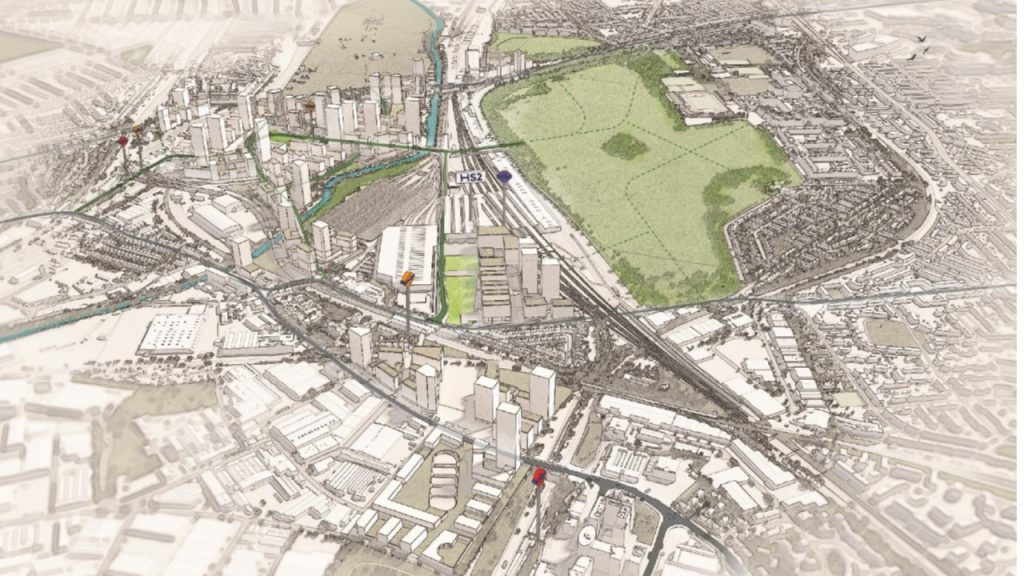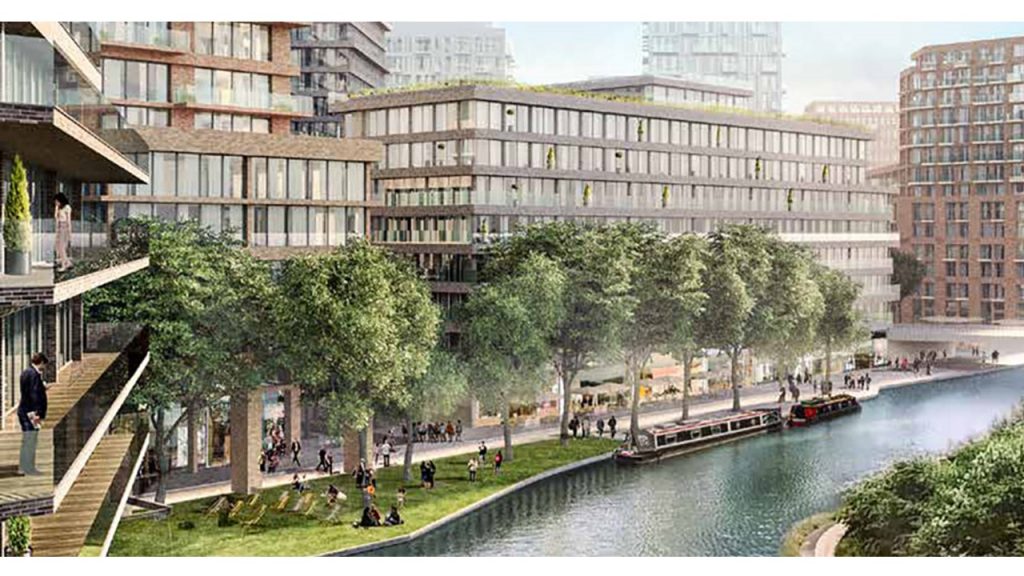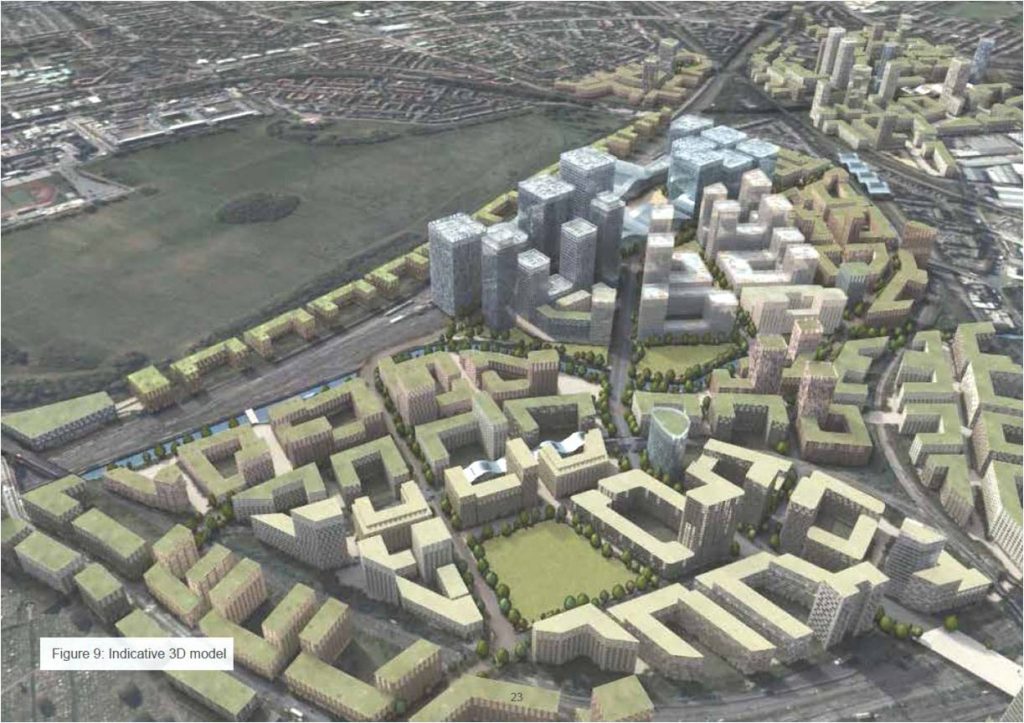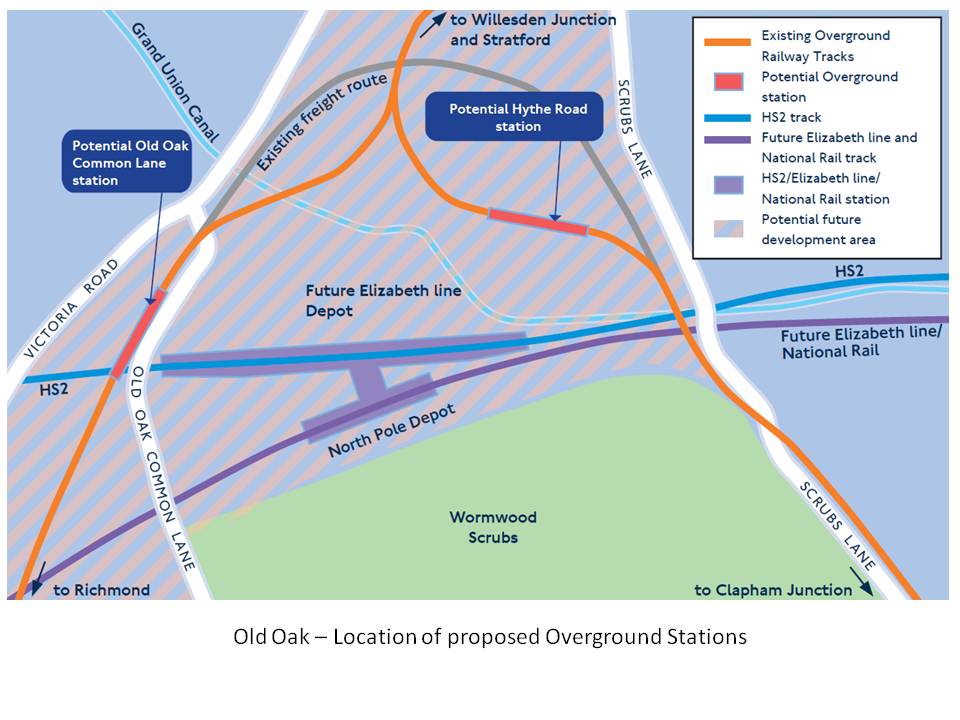It is now nearly four years since the Old Oak and Park Royal Development Corporation started life on April 1st 2015. A moment for reflection.
The Draft Local Plan is due to be ‘examined in public’ in April 2019. The first salvos in this process have been fired. The appointed Inspector is Paul Clark MA MRTPI MCMI. As the process requires, he has sent the OPDC a set of ‘initial questions’. The OPDC planners have responded to these.
We hope that the Inspector will prove robust in his questioning of the key elements of the Local Plan, and particularly the Corporation’s decisions to stick rigidly with a 25,500 housing target with consequential ‘super densities’ proposed.
Our Forum regularly raises the issue of planned housing densities at a new Old Oak. The average figure of 600 units per hectare proposed for ‘Old Oak North’ we believe to be a UK first (other than perhaps Isle of Dogs) and more akin to built forms in Hong Kong and Shanghai. As a comparison, the new draft spatial plan for Greater Manchester has just been published, with a proposed maximum density of 200 units/hectare in city centre locations and 120 homes per hectare in designated town centres.
Meetings of the Old Oak Neighbourhood Forum and Grand Union Alliance
The Forum’s most recent meetings have been on November 8th 2018 and January 8th 2o19. This latter meeting was held jointly with the Grand Union Alliance and was very well attended with 60-70 residents present.
The easiest way to catch up with discussions at these meetings is to check out the slide presentations. These are posted on our Newsletters and Meeting Notes page.
OPDC Consultations
OPDC is consulting on three Supplementary Planning Documents (SPDs). These cover specific issues, and are formal documents which support the Local Plan.
One of these covers ‘planning obligations’. The are the financial contributions made by developers, via Section 106 Agreements ad the Community Infrastructure Levy (CIL). There was discussion at our January 8th meeting on why it is that OPDC has declined to date to start charging CIL payments from developers and successful planning applicants.
This means that no CIL contributions have been raised from the series of tall towers at North Action, as approved since 2015. Nor for the three schemes along Scrubs Lane (on which there is still no sign of construction starting on site).
Given the existing and potential impact of these schemes, particularly those at North Acton, local residents are concerned that developers are not being required to meet the Government’s CIL levy. CIL is designed to provide funds for the infrastructure costs that accompany new development, in terms of public realm, roads, schools and health facilities.
The result of a ‘no charging’ regime by both OPDC and LB Ealing means that nothing has been collected to make up the ‘neighbourhood pot’ that would normally be available for local communities to have their say on infrastructure and other priorities.
Of all CIL payments made to a London planning authority, 15% of the total is designated as Neighbourhood CIL. These resources are intended by Government to be allocated in consultation with local people. OPDC and Ealing are two out of only four authorities in London which have yet to start collecting CIL. Whereas in Brent, the total CIL amassed is substantial, and the Neighbourhood element runs to several millions over the 2017-20 period.
The other two SPDs cover Daylight and Overheating in High Density Development, and Waste Management in High Development. Anyone who has lived in a high rise flat knows the risks that disposal of rubbish (including food waste) can become a major problem.
At the consultation session on January 19th at the Collective in Old Oak Road, attendance of the public was limited to four residents. OPDC officers explained their determination to come up with ‘state of the art’ solutions on both waste disposal and the overheating problems that can affect very tall buildings.
The worry for the public is that it will be LB Ealing, Brent, and Hammersmith & Fulham councils which will be collecting waste from the developments in their separate parts of the OPDC area. Each uses different methods and refuse vehicles. OPDC hope that joined up arrangements can be agreed. But even if this is acheieved, the densities and building heights proposed will present major challenges. There will be a lot of rubbish to be shifted, and disposal by residents themselves of discarded furniture and ‘bulky items’ will not be straightforward in new developments destined to be ‘car-free’.
There is a further consultation taking place at All Souls Church in Harlesden on 5 February 2019 at 18.00.






